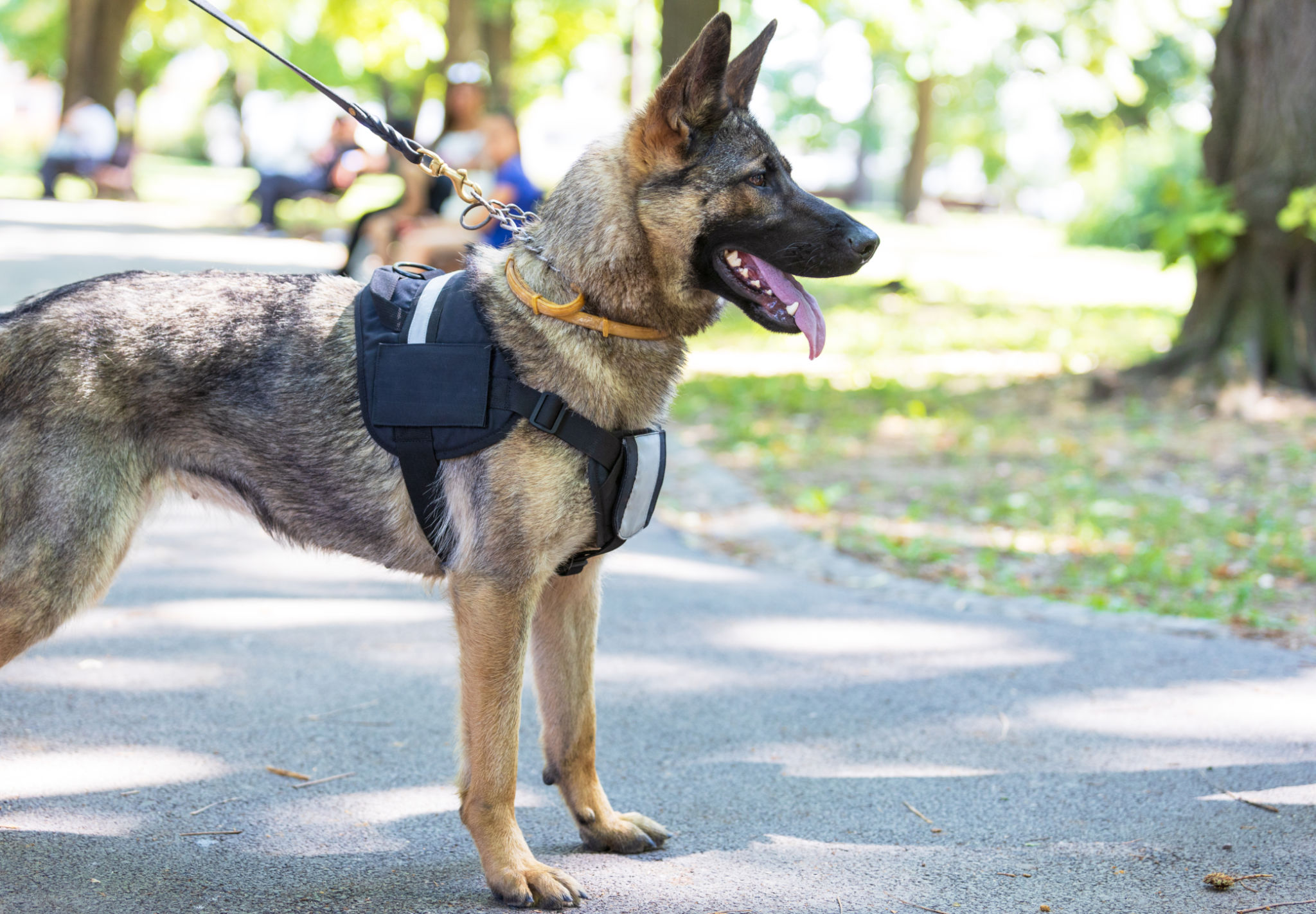Understanding the Costs of Emotional Support Dog Training
DR
Discover the emotional support dog training cost and factors influencing expenses. Explore training options to ensure your support dog's success.

Emotional support dogs are more than just pets; they play a vital role in the mental well-being of their owners. The bond formed with these animals can lead to a significant improvement in one's quality of life. Yet, this emotional and therapeutic support comes with responsibilities and costs that should be carefully considered. Understanding these financial implications can help ensure that you are prepared for the commitment of owning an emotional support dog.
Before diving into the costs, it's important to understand what an emotional support dog is and how it differs from other types of service animals. Emotional support dogs provide companionship and help alleviate symptoms of mental health conditions. Unlike service dogs, they do not require specialized training to perform specific tasks for their owner. However, they do need basic obedience training to ensure they are well-behaved in public settings.
Emotional support dogs are recognized under the Fair Housing Act, which allows them to live with their owners even in housing that has a no-pet policy. This legal protection underscores the significance of their role in enhancing the mental health of their owners. Despite not needing task-specific training, these dogs must be well-mannered to ensure they can accompany their owners in various settings without causing disruptions or stress.
Service dogs are trained to perform specific tasks for individuals with disabilities, such as guiding the visually impaired or alerting a person with epilepsy to an upcoming seizure. Emotional support dogs, on the other hand, primarily offer comfort and emotional support. While they do not require the same level of training as service dogs, they must still exhibit good behavior and social skills.

The distinction between emotional support dogs and service dogs is crucial, as it affects the training requirements and legal rights associated with each. Service dogs undergo rigorous training to perform tasks that mitigate their handler's disability, which can include a wide range of physical and psychological tasks. Emotional support dogs, however, are not limited to helping those with disabilities; their primary purpose is to provide emotional relief and companionship, which can be incredibly therapeutic for individuals facing mental health challenges.
Several factors can impact the cost of training an emotional support dog. Understanding these factors can help you budget accordingly and choose the best training options for your needs.
The costs can vary based on the dog's breed, age, and temperament, as some breeds may require more intensive training due to their natural behavior or energy levels. Additionally, the owner's location can influence the cost, as training fees can differ significantly between urban and rural areas. Evaluating these factors will help you determine the most suitable and cost-effective training approach for your emotional support dog.
The type of training program you choose will significantly affect the overall cost. There are generally three main options:
Professional Training Programs: These programs are offered by certified trainers or organizations specializing in emotional support animals. They can be more expensive but often provide comprehensive training. Such programs often include assessments to tailor the training to the specific needs of the dog and owner, ensuring that the support animal is well-prepared for its role.
Private Trainers: Hiring a private trainer can offer personalized attention and tailored training sessions. Costs can vary depending on the trainer's experience and location. Private trainers can offer flexibility in scheduling and can focus on specific behavior issues your dog may have, providing a more customized experience.
Do-It-Yourself Training: Some pet owners opt to train their emotional support dogs themselves using online resources and books. This is the most cost-effective option but requires a significant time investment and dedication. DIY training can be challenging as it demands consistency and patience, but it allows for a deep bonding experience with your dog.

The length of the training program can also influence the cost. Short-term programs may be less expensive, but they might not provide the comprehensive training your dog needs. Longer programs can offer more in-depth training but will cost more overall.
The duration of training can also depend on the dog's learning pace. Some dogs may quickly grasp new commands and behaviors, while others may require more time and repetition. Additionally, ongoing training and reinforcement of skills are crucial for maintaining a dog's good behavior, which can imply further costs over time.
Experienced trainers with a strong reputation in the field may charge higher fees for their services. However, investing in a reputable trainer can often yield better results, ensuring your dog is well-prepared to provide emotional support.
A trainer's experience can make a significant difference in the quality of training your dog receives. Highly skilled trainers can identify and correct behavioral issues more efficiently, potentially saving time and money in the long run. Additionally, a reputable trainer can provide valuable insights and tips on managing your dog’s behavior beyond the training sessions.
So, how much does emotional support dog training cost? While prices can vary based on the factors mentioned above, here's a general overview:
Understanding the typical costs involved can help you plan and budget effectively. Being aware of the potential expenses allows you to weigh the benefits of different training options and make a choice that aligns with your financial situation and training goals.
Professional training programs can range from $1,500 to $5,000 or more. These programs often include a combination of basic obedience training, socialization, and specific skills needed for emotional support.
The comprehensive nature of professional programs can be particularly beneficial for first-time dog owners or those with specific behavioral concerns. These programs often provide structured training schedules and progress assessments, ensuring that both the dog and owner are on track to meeting their goals.
Private trainers typically charge on an hourly basis, with rates ranging from $50 to $200 per hour. The total cost will depend on the number of sessions required to achieve the desired level of training.
The flexibility of working with private trainers can be advantageous for individuals with busy schedules or unique training needs. These sessions often offer more one-on-one time with your dog, allowing for tailored approaches to address specific challenges and reinforce positive behaviors more effectively.
The cost of DIY training is generally much lower, with expenses mainly related to purchasing training materials such as books, videos, or online courses. These materials can cost anywhere from $50 to $300.

While DIY training is cost-effective, it requires a commitment to learning and applying training techniques consistently. Success in this approach often depends on the owner's ability to stay patient and persistent while working with their dog, which can be rewarding as it strengthens the bond between owner and pet.
In addition to training expenses, there are other costs associated with owning an emotional support dog. These can include:
Considering these additional expenses is essential for a holistic understanding of the financial commitment involved in owning an emotional support dog. Being prepared for these ongoing costs ensures that you can provide a stable and healthy environment for your support animal.
Routine veterinary care is essential to keep your emotional support dog healthy. Annual check-ups, vaccinations, and preventative medications can add up to several hundred dollars per year.
Unexpected medical expenses can also arise, such as illnesses or injuries, which can lead to costly treatments. Pet insurance is an option that some owners consider to help manage these potential costs, providing peace of mind and financial support in case of emergencies.
Feeding your dog a nutritious diet and providing necessary supplies such as a leash, collar, and bedding are ongoing expenses. Budget around $500 to $1,000 per year for these items.
The quality of food can impact the health and longevity of your dog, so investing in a balanced diet is crucial. Additionally, other supplies like grooming tools, toys, and treats should be factored into your budget as they contribute to your dog's overall well-being and happiness.
While not mandatory, registering your emotional support dog with a reputable organization can offer additional benefits, such as access to support networks and resources. Registration fees can vary but are typically under $100.

Registration can also serve as a form of documentation, which might be required by certain housing authorities or airlines. This can help prevent potential conflicts and ensure that your rights as an emotional support animal owner are recognized.
Deciding whether the investment in emotional support dog training is worthwhile depends on your individual needs and circumstances. An emotional support dog can offer significant emotional benefits, improving the quality of life for those dealing with mental health challenges.
For many, the emotional and mental health improvements gained from having a well-trained support dog can outweigh the financial costs. The sense of companionship, comfort, and security provided by these animals often leads to enhanced daily functioning and emotional stability.
Properly trained emotional support dogs can provide consistent companionship and support, help reduce anxiety, and encourage social interaction. The peace of mind that comes with having a well-behaved and reliable support animal can make the investment in training worthwhile.
A well-trained emotional support dog can also help you navigate public spaces with greater ease and confidence, knowing that your dog can handle various social situations. This can lead to increased socialization opportunities and a more active lifestyle, further enhancing your mental health and well-being.
Understanding the costs associated with emotional support dog training is an important step in planning for the addition of a support animal to your family. By considering the various factors that influence training costs and weighing the benefits of a well-trained emotional support dog, you can make an informed decision that best meets your needs.

Investing in the right training program can ensure that your emotional support dog is equipped to provide the comfort and assistance you need. Whether you choose professional training, hire a private trainer, or take on the task yourself, the bond you form with your dog will be invaluable.
Ultimately, the decision to invest in an emotional support dog involves balancing financial considerations with the potential for improved mental health and quality of life. With the right preparation and commitment, an emotional support dog can become a cherished companion and an integral part of your emotional support system.
